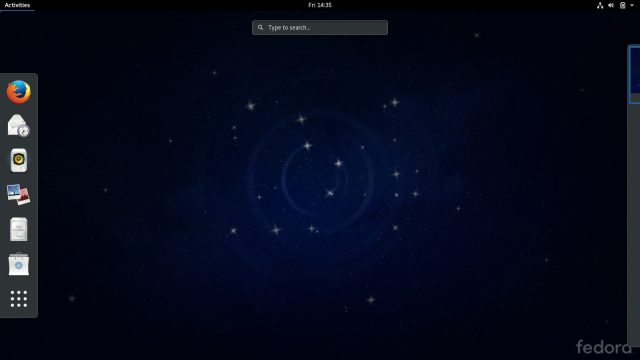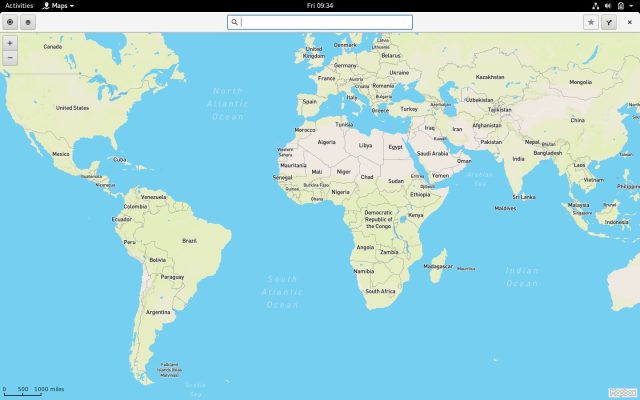
Fedora 24 is very near the best Linux distro release I've used, and certainly the best release I have tested this year. Considering 2016 has welcomed new offerings like Mint 18 and Ubuntu 16.04 LTS, that says a great deal about the Fedora project's latest work. But like many Fedora releases before it, even Fedora 24 got off to a rocky start.
Longtime Fedora users are more than likely conservative when it comes to system upgrades. And historically, new Fedora releases tend to be rough around the edges. Wise Fedora followers tend to be patient and give a new release a couple of months for the kinks to work out and the updates to flow in. Usually, such a timing cushion also means all the latest packages in RPM Fusion have been updated as well. With that kind of precedent, being the first to jump on a Fedora upgrade—which comes every eight or so months—can be risky.
Patience does typically reward you with a really great Linux distro, though. And far more valuable than updated apps, waiting means you can skip catastrophic bugs like the one that completely broke Fedora 24 on Skylake systems after a kernel update. Fedora 24 shipped with Linux kernel 4.5 and managed to miss kernel 4.6 by about two weeks, which is a shame because no less than Linus Torvalds himself called kernel 4.6 "a fairly big release - more commits than we've had in a while." In other words, perhaps Fedora should have waited a few weeks to ship.
But the Fedora project elected to not postpone its release. While the whole "let's wait a bit" logic is a slippery slope, in this case Fedora seems to have erred on the wrong side. Updating to Fedora 24 has been fraught with problems for many users, particularly those with Skylake chips. And the problems go above and beyond the problems that already plague Linux on Skylake.
It has been almost two months since Fedora 24 was released, and at this point most of the bugs, mercifully, have been worked out. In fact, I did most of my Fedora testing on the Dell XPS 13 I reviewed earlier for Ars and found Fedora 24 to be a far smoother experience than Ubuntu 16.04. That said, if you have a Skylake chip, proceed cautiously.
Fedora 24: A GNOME 3.20 Showcase
Fedora 24 ships with a slew of desktop options, everything from the very lightweight LXDE to the flagship offering: GNOME 3.20. Because Fedora is closely tied to GNOME, I've done the majority of my testing on GNOME 3.20. That offers a host of new features, including a revamped Software app, image editing in Photos, and (my personal favorite) GNOME Maps. There's also the beginning of what might eventually (finally) be a decent GUI Calendar app for Linux.

The first thing you'll want to do with a fresh install is grab the updates that have come since the installer was packaged, which makes your first stop the GNOME Software app. The good news in GNOME 3.20 is that the Software app is a lot more stable than it used to be (previous releases crashed constantly for me). It now supports Flatpak apps, though Flatpaks are probably the least stable aspect of GNOME Software in 3.20. Still, if you enjoy graphical software installers, GNOME Software has one of the nicest interfaces you'll find among Linux desktops.
-
GNOME Software in Fedora 24.Scott Gilbertson
-
Searching and installing applications via GNOME Software in Fedora 24.Scott Gilbertson
After installing Fedora 24, you can now update to future releases directly within the Software app. Yes, the magic eight ball says Fedora updates might possibly be a bit less painful going forward. (We'll let you know for sure when Fedora 25 rolls around.) Also new in Software is the ability to install device firmware, provided your device supports it.
Once Fedora 24 is up to date and the 4.6 kernel is installed, it's worth checking out the rest of the GNOME suite of apps. The GNOME development team has been hard at work putting together a suite of basic applications that will fit the 80-percent use case and take GNOME beyond just a desktop and window manager to be a full-featured, unified ecosystem.
Apps like GNOME Photos, GNOME Calendar, GNOME Videos, and GNOME Software go a long way to simplifying the first-time user experience. GNOME 3.20 sees some big updates for several of these apps, in particular Photos and Maps. Photos started life as a very basic viewer with minimal features; you could browse your photos and upload them to any online accounts you had set up through GNOME. With 3.20, GNOME Photos gains its first image editing capabilities.
-
GNOME Photos organizer looks a lot like Shotwell.Scott Gilbertson
-
Basic editing features in GNOME Photos.Scott Gilbertson
GNOME Photos can now crop, rotate, and perform some basic color adjustments to your photos. There's a new "enhance" option (which will sharpen and denoise), and of course there are some Instagram-style filters.
One thing I really liked about Photos is that all edits are non-destructive. The original photo is preserved and always available should you change your mind about your edits. Another nice feature is the option to resize photos before e-mailing. (For the love of bandwidth, please use this feature.)
GNOME Photos is still not quite as capable as Shotwell when it comes to editing, which is probably why Fedora sticks with Shotwell as the default image app in Fedora 24. But Photos is getting there. If you're looking for a fast, simple way to organize, share, and make basic edits to your photos, GNOME Photos is worth a try. Shotwell is still definitely more powerful, but Photos is faster and has a simpler interface.

Another new GNOME app that's worth a look is GNOME Calendar. If all you want is a calendar—not a complete all-in-one monstrosity of e-mail, notes, todos, calendars, and kitchen sinks—there really aren't any good Linux apps out there. The one solution most will point to is Thunderbird, but it's all but abandoned at this point. Evolution works, but it's serious overkill if all you need is a calendar. GNOME Calendar has been looking like a great solution since it was quietly released a few years ago, but the app still only really supports calendars hosted on Google or ownCloud (presumably NextCloud as well). More support didn't make this release, but the good news is that support for calendar files like .ics is coming in GNOME 3.22.
One thing that hasn't changed much in this release is the GNOME Shell environment, which has a couple of new features but, by and large, looks and behaves just like the last couple of releases. This iteration gains a new set of multimedia controls that live in the little applet that comes up when you click the clock in the menu bar.
Fedora opts for a very stock GNOME installation with no customization that I could see beyond the wallpaper. The result is a very usable, albeit somewhat RAM-hungry desktop. While GNOME is certainly no lightweight, Fedora 24 with GNOME 3.20 worked reasonably well on a Chromebook with only 4GB of RAM.
The standard set of GNOME apps has also been updated to the latest versions, including LibreOffice, which is now at version 5.1, Shotwell, which is at v.23, and Firefox 48.
reader comments
133